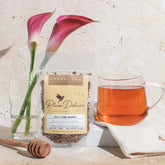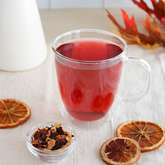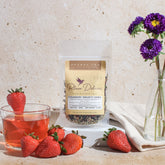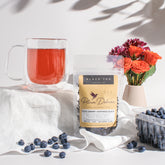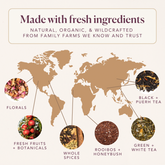Assam is a state in northeastern India, south of the eastern Himalaya Mountains and encompassing part of the Brahmaputra River. Assam is also black tea produced from a local variety of the tea plant, Camellia sinensis var. assamica.

What is Assam Tea History?
While India’s tea history probably goes back thousands of years, commercial production as we know it began with the British East India Company. Hoping to provide a cheaper alternative to Chinese tea, the company imported Camellia sinensis var. sinensis seeds from China, but the plants failed to grow in the lowlands of Assam.
However, in the early 1800s, Robert Bruce, a Scottish trader, noticed a plant in Assam that appeared to be a native tea variety with which local Singpho people made food and beverages. Bruce intended to have the plant scientifically identified, but died before the task was done. Years later, in the 1830s, his brother, Charles Alexander Bruce, had the plant tested and confirmed that it was, indeed, a local variety of Camellia sinensis.
This story calls to mind Darwin’s finches in the Galapagos: the tea plant, like the birds, somehow arrived in Assam and adapted to the conditions there, becoming a unique variety.

Terrior of Assam Tea
No, I didn’t misspell “terrier,” and I’m not referring to a tea-loving dog. And no, I did not misspell “terror.” Assam tea is not scary.
“Terrior” (say tehr-WAHR) is a French word used in the wine industry that refers to the soil, water, altitude, and climate of a location and a crop that grows there. It is these environmental factors, along with the assamica variety, that give Assam tea its particular flavor. When discussing details of tea flavors, instead of “location, location, location” maybe we should say “terrior, terrior, terrior.”
Unlike China’s tea, which grows at high elevations, Assam tea grows at a low elevation, in the nutrient-rich floodplain of the Brahmaputra River. The area experiences high heat, humidity, and rainfall during the monsoon season and cold, dry winters.
What Does Assam Tea Taste Like?
My taste test of the Plum Deluxe Royale Assam tea conjured the following adjectives: earthy, malty, smooth, robust, full, proud, confident, and solid—as in a solid base from which to build a good, meaningful, productive day, or perhaps a delicious tea blend.
The second steep was as good as the first, though different, more nutty, and still well away from the bitter edge. The third steep had a pleasant, delicate flavor, with no hint of bitterness.
What does Assam tea taste like? A strong, confident beginning, the start of something good.

What is Assam Tea? A Plus-one Invitation
The robust flavor of Assam tea is like a plus-one invitation, welcoming an addition. It goes well with the customary sugar, cream, or milk and also lemon, but even better are the Plum Deluxe House Blend Black Tea (Creamy Vanilla English Breakfast) and Heritage Blend Black Tea (Maple Scottish Breakfast).
Did you notice that both of those are “breakfast” teas? Assam teas, straight up or blended, are often the base of English and Irish Breakfast teas. The strength of the brisk, full-body flavor props up and stimulates a drowsy soul.
Assam Tea Time
Speaking of waking up, tea workers in Assam are up and at 'em earlier than workers elsewhere in India.
Because India spans more than 2,000 km (1,243 mi) from east to west, the sun rises much earlier in the eastern part of the country than it does in the central and western parts. The tea gardens of Assam, being in the east, do not follow India Standard Time. Instead, “Tea Garden Time” is an hour ahead, allowing tea workers to make the most of natural daylight. How’s that for proof that tea gives us a head start on our days?
Maybe the answer to “what is Assam tea?” is “a delicious and effective wake-up call.”
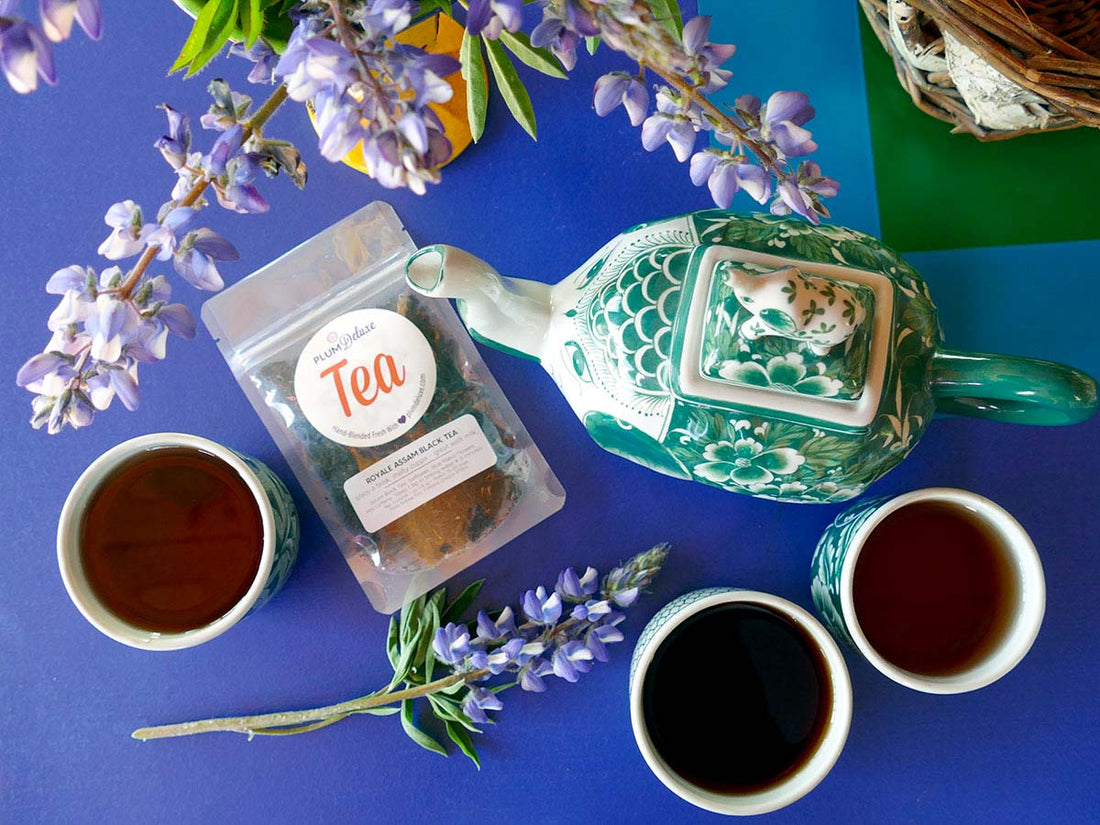
![Snow Day Sips Winter Tea Variety Pack [6-Pack of Flavors]](http://www.plumdeluxe.com/cdn/shop/files/holidayTeaVarietyPack_3.png?v=1766043158&width=165)
![Winter Tea Variety Pack [6-Pack Variety of Flavors]](http://www.plumdeluxe.com/cdn/shop/files/2.03-1080x1080-PlumDeluxe-IT-205020.png?v=1762440068&width=165)


